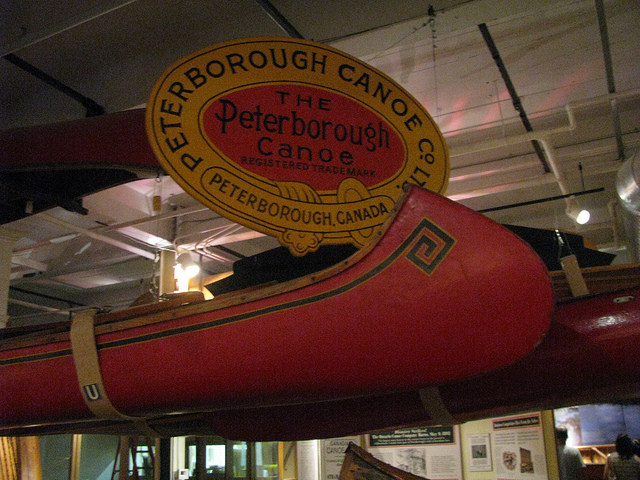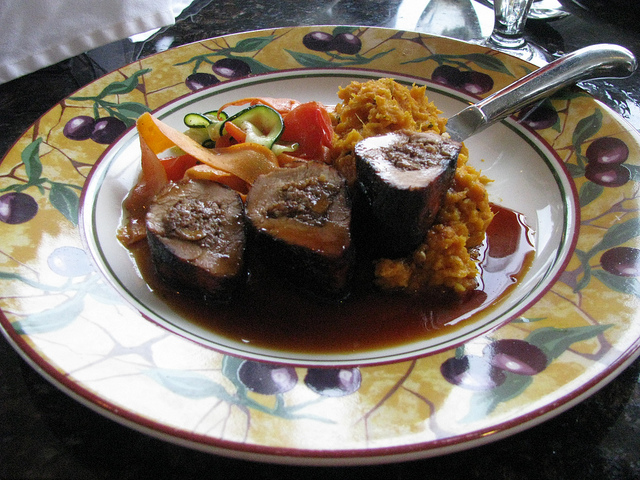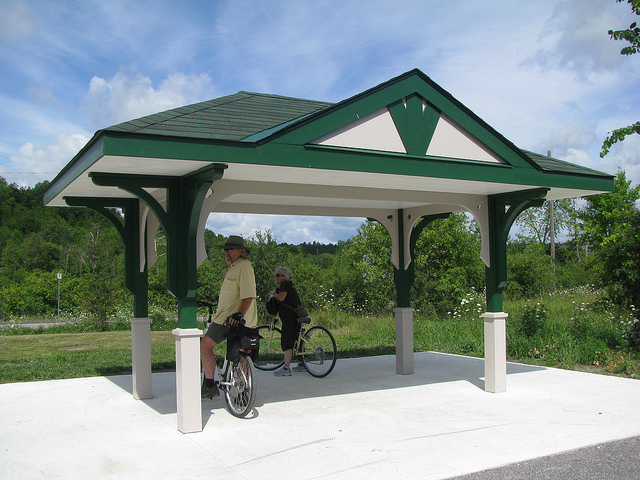After the excitement of having passed over the world’s highest hydraulic lift lock, I now wanted to explore another one of Peterborough’s landmark sites: the Canadian Canoe Museum. What originally started as a private collection of canoes in 1957 has evolved into the largest collection of kayaks and canoes in the world. Over 600 of these vessels are now owned by the museum and about 120 canoes and kayaks are displayed in a spacious former factory on Monaghan Road.

John Summers (on the right) and his colleage Anthony gave me a guided tour
John Summers, the general manager, took me through the museum and put the importance of canoes and kayaks into historical context. He explained that canoes and kayaks have existed in many different cultures across the globe for thousands of years. As a matter of fact, the oldest recovered canoe in the world, located in the Netherlands, was constructed between about 8200 and 7600 before Christ. In Canada, canoes and kayaks have been used by native people for countless centuries.

The Canadian Canoe Museum features more than 100 canoes of different types
As we began our walk through the museum, we first stopped at a big map that explained why canoes were so important in Canada. While the United States was explored and settled by people on horse and foot, Canada’s most important form of transportation was the canoe, given this country’s extremely dense network of creeks, rivers and lakes. John explained that between eastern and western Canada there is only one huge portage of about 30 kilometres, while the rest of the country can be traversed quite conveniently by boat on the country’s waterways. Canoes became critical tools in the Canadian fur trade, spurring development of many remote communities.

Beautiful art illustrates the importance of the caoe in Canada
As we walked through the museum, John explained three main canoe construction styles to me, starting with the dugout. These were mostly found in British Columbia where big red cedar trees were cut down and hollowed out. We saw a great example of a dugout with impressive Haida decoration on it.

Amazing ornamentation on this canoe from Papua New Guinea
The next type of canoe I saw was a birch bark canoe which essentially consisted of a sown-together birch bark bag that is reinforced with a wooden frame and thick wooden planks. These types of canoes would be found in central and eastern Canada and all the construction materials were abundantly available in the forest.

A birch bark canoe
In the far north of Canada, wood is much more scare and a different construction technique was required. A sturdy frame would be produced of small pieces of wood, often driftwood and remnants of packing crates that had washed up on shore. This wooden skeleton was then covered with animal skin, usually seal or walrus skin that was sewn together with the sinews from these animals.

These types of canoes were made in the far north of Canada
So the construction of these vessels essentially depended on the location and on the locally available construction materials. John also explained to me the historical evolution of the canoe: originally the human powered boats were only built for work-related purposes such as hunting, fishing and transportation. It was not until the 1800s that canoes actually started to be used for recreational purposes which led to industrial production of these boats.

Adam van Koeverden’s kayak, one of Canada’s best sprint kayakers
An entire section of the Canadian Canoe Museum is dedicated to the canoe building industry which started in the late 1850s and peaked in the 1880s when canoeing became a widely popular activity. At that time canoe clubs and annual canoe regattas came into being, and canoeing became a popular pastime in the newly developing tourism centres in Canada and the United States.

Canoeing became very popular in the second half of the 1800s



